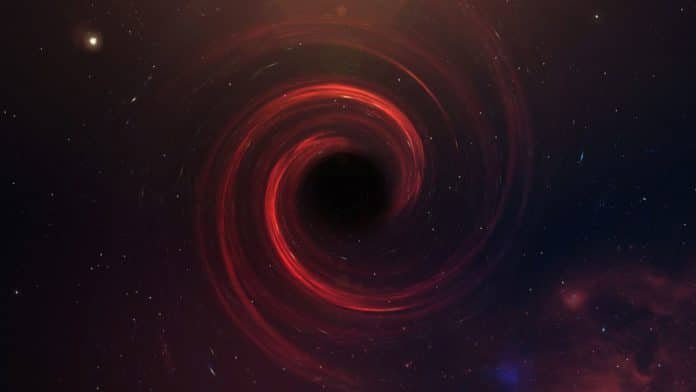The black hole at the center of the Perseus galaxy cluster generates sound. This happens due to pressure waves emitted by black holes causing ripples in the cluster’s hot gas. However, humans cannot hear some 57 octaves below middle C. Thanks to NASA for bringing more notes to this black hole sound machine.
NASA has released a recording of sound waves originating from a black hole at the center of the Perseus galaxy cluster. This new sonification is the translation of astronomical data into sound. Astronomers extracted the data and made it audible for the first time.
Unlike any other done before, this sonification revisits the actual sound waves discovered in data from NASA’s Chandra X-ray Observatory.
To create this sonification of Perseus, astronomers extracted the data in radial directions, i.e., outwards from the center. They then synthesized the signals into the range of human hearing by scaling them upward by 57 and 58 octaves above their true pitch.
Astronomers noted, “Another way to put this is that they are being heard 144 quadrillions and 288 quadrillion times higher than their original frequency.”
“The radar-like scan around the image allows you to hear waves emitted in different directions. In the visual image of these data, blue and purple both show X-ray data captured by Chandra.”
Astronomers also releasing the sonification of another famous black hole called Messier 87, or M87. The sonification looks at data from telescopes that observed M87 on much wider scales at roughly the same time.
NASA mentioned in their blog, “The image in visual form contains three panels that are, from top to bottom, X-rays from Chandra, optical light from NASA’s Hubble Space Telescope, and radio waves from the Atacama Large Millimeter Array in Chile. The brightest region on the left of the image is where the black hole is found, and the structure to the upper right is a jet produced by the black hole. The jet is produced by material falling onto the black hole.”
“The sonification scans across the three-tiered image from left to right, with each wavelength mapped to a different range of audible tones. Radio waves are mapped to the lowest tones, optical data to medium tones, and X-rays detected by Chandra to the highest tones. The brightest part of the image corresponds to the loudest portion of the sonification, where astronomers find the 6.5-billion solar mass black hole that EHT imaged.”
